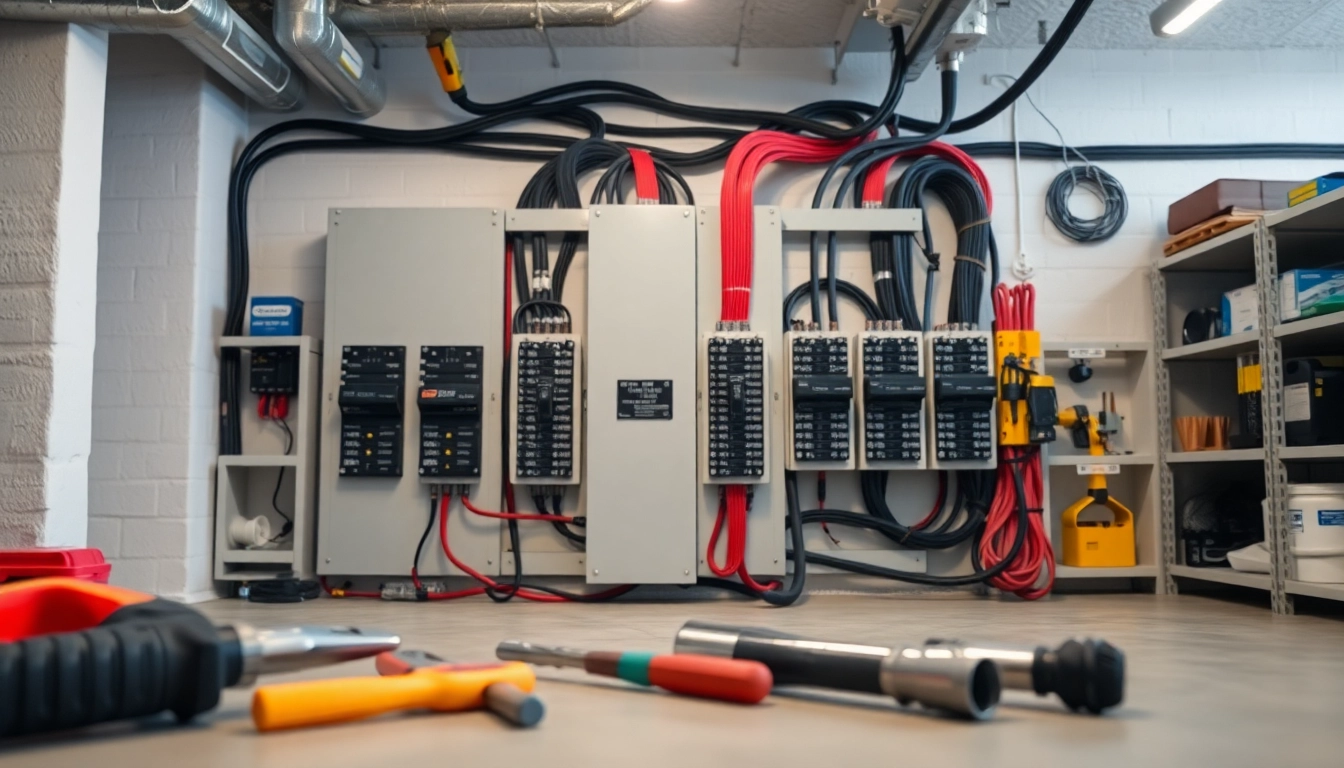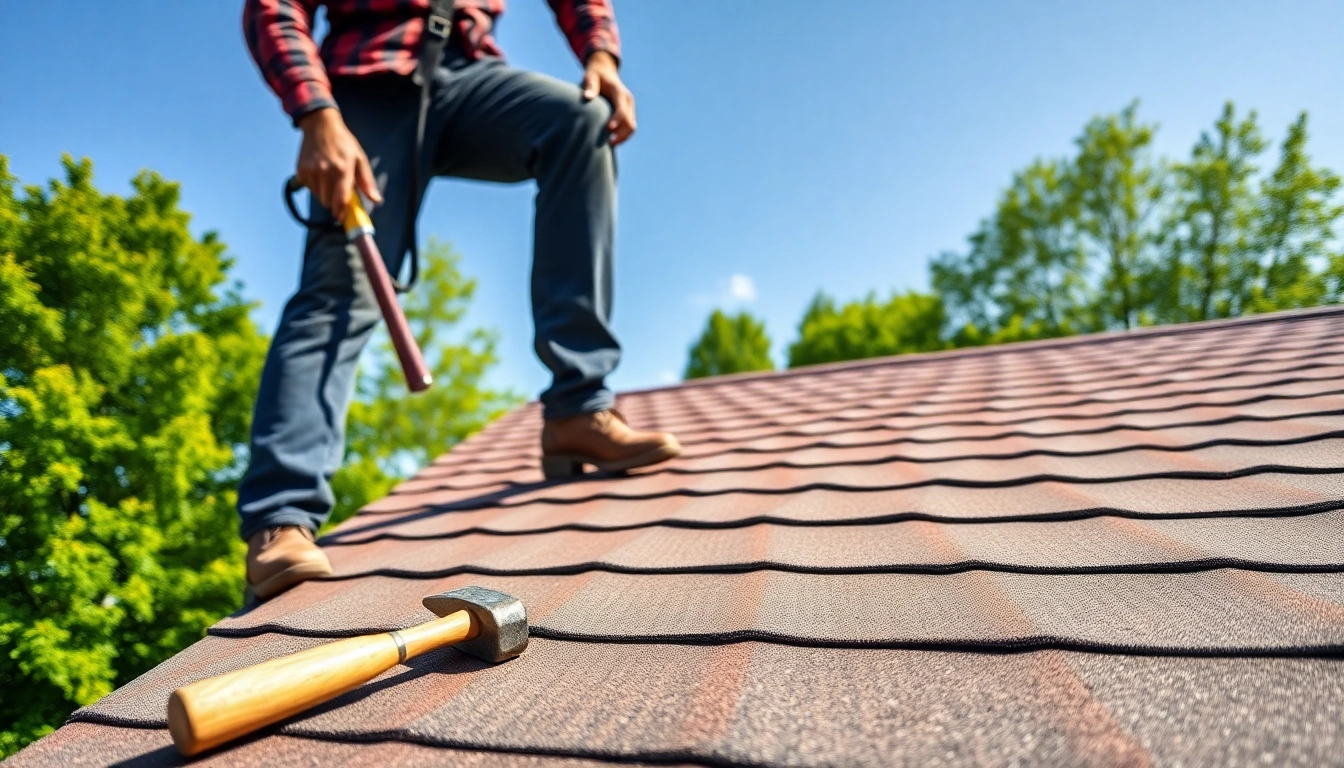Understanding the Basics of Electrical Panels
What is an Electrical Panel?
An electrical panel, often referred to as a breaker box or distribution board, acts as the central hub in a home’s electrical system. It is responsible for distributing electrical power from the utility line to various circuits throughout the house. The electrical panel houses circuit breakers—devices that automatically interrupt the electrical current to prevent overloads, shorts, or electrical faults that could lead to fires or damage to appliances.
The Role of Electrical Panels in Your Home
Electrical panels serve several critical functions beyond merely directing power. These include:
- Overcurrent Protection: By using breakers, the panel protects the wiring in your home from heat caused by excess current.
- Isolation: It enables you to isolate sections of your electrical system for maintenance or in case of an emergency.
- Load Distribution: It distributes electricity to various parts of the home according to demand and design, ensuring efficiency and safety.
- System Monitoring: Many modern panels include electrical meters that enable homeowners to monitor usage and detect issues early.
Common Types of Electrical Panels
There are several types of electrical panels that you might encounter:
- Main Breaker Panels: Found in most homes, these contain individual breakers for each circuit and a single main breaker for the overall power supply.
- Subpanels: These are smaller panels that branch out from the main panel, providing power to a specific area of the house (like a garage or workshop).
- Smart Panels: An emerging category that allows for real-time monitoring and connectivity through smart home networks.
Signs You Need to Upgrade Your Electrical Panel
Increased Power Demands from Modern Appliances
Modern appliances require significantly more electricity than older models. If you have recently added high-powered devices such as electric dryers, dishwashers, or home office equipment, your current panel may not be equipped to handle the increased load.
Frequent Circuit Breaker Trips
If you regularly find that circuit breakers trip, this can be an indication that your electrical panel is overloaded. Each breaker is designed to manage a specific load, and repeated tripping suggests that you may be drawing more power than the system can handle.
Visible Signs of Wear or Damage
Physical signs of wear can indicate a need for a panel upgrade. Rust, scorch marks, or circuit breakers that feel hot to the touch are serious warning signals. These signs suggest a potential fire hazard that must be addressed immediately.
Choosing the Right Electrical Panel for Your Home
Evaluating Your Home’s Electrical Needs
Understanding your household’s electricity demands should be the first step in selecting an electrical panel. Factors to consider include:
- The square footage of your home.
- The number of appliances, electronics, and other devices that require power.
- Future plans for renovations or expansions that may increase electrical needs.
Types of Electrical Panels Available
As outlined earlier, you can choose between main breaker panels, subpanels, and smart panels. It’s essential to select a panel that not only meets your current needs but also allows for future expansion.
Factors Influencing Panel Selection
When selecting an electrical panel, consider the following factors:
- Capacity: Ensure the panel can handle the total amperage load of your house, typically found in 100, 200, or 400 amp configurations.
- Brand Reliability: Opt for established brands known for their durability and reliability, such as Square D or Siemens.
- Cost: Balance features and capacity against your budget to find a suitable option without compromising safety and efficiency.
Steps to Upgrade Your Electrical Panel
Preparing for the Upgrade Process
Before upgrading your electrical panel, it’s crucial to evaluate your home’s wiring to ensure it meets contemporary electrical safety standards. This may involve inspecting the wiring in your home and identifying any underlying issues that need attention.
Hiring a Qualified Electrician
Electrical panels require installation by a certified electrician, as working with high voltage is dangerous. When selecting an electrician, ensure they are licensed and experienced in panel upgrades. Ask for references and obtain multiple bids before making a final decision.
Post-Installation Considerations and Tips
After your new panel is installed, there are a few best practices you should follow:
- Familiarize yourself with the layout and labeling of your new panel.
- Consider investing in surge protection devices to protect your home’s electronics from power fluctuations.
- Schedule regular maintenance checks to ensure everything continues to function correctly.
Maintaining Your Electrical Panel for Longevity
Regular Inspections and Maintenance
Perform routine inspections of your electrical panel. Look for any signs of damage or wear, such as corroded panels, loose wire connections, or burnt-out switches. Regular maintenance can help extend the life of your panel and prevent emergency issues.
Upgrading Components and Breakers
As technology evolves, so do electrical components. If your home frequently upgrades appliances or electronics, consider replacing existing circuit breakers with those that are more suited to modern electrical loads.
Understanding Panel Safety Features
Familiarize yourself with the safety features of your electrical panel. Breakers should be reset easily, and if tripping occurs frequently, it may hint at a larger issue that requires attention. Safety features enhance overall electrical system security, and staying informed will help you maintain your home’s safety long-term.



